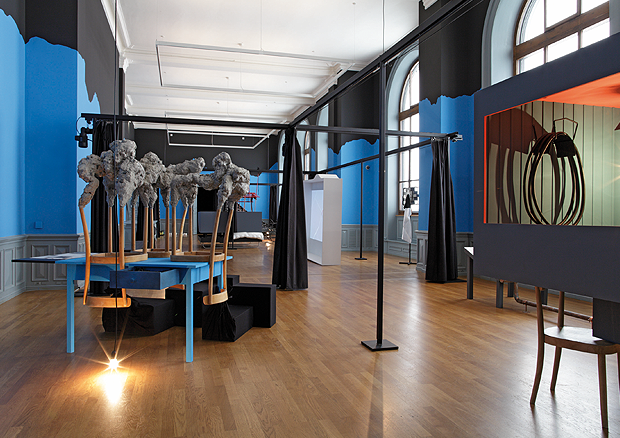First solo exhibition in a Swiss fine art museum
Yves Netzhammer. «A Refuge for Drawbacks»
After several small solo exhibitions in the Helmhaus Zürich (2003) and the Kunsthalle Winterthur (2009), Netzhammer’s works will now be exhibited in the Kunstmuseum Bern. Here previous works will be combined with new creations that were specially produced for this show, making up Yves Netzhammer’s first large-scale solo exhibition in a Swiss fine art museum.
His drawings, room installations, murals, and computer-generated videos fascinate with their corporeal impact and their formal clarity. Born of the playful energy of re-combining, these artworks probe, step-by-step, into the dark side of our existence. The pleasing is interlinked with the displeasing, while the dead merges with the living into hitherto unseen creatures and scenarios. Netzhammer persistently explores the boundaries between the perception of autonomy and the perception of heteronomy, thereby creating images with a powerful presence, in which he brings the hierarchy between human-beings, animals, plants, and objects into fluctuation. The frighteningly beautiful intermediate stages that emerge question the prejudices we foster in the way we think in images and grasp the pressing problems of life in a new and unique way. The issues that the artist addresses are attitudes toward nature, toward other cultures, and fear of loss of self in face of the increasing dominance of the role of media and technology in the world. He blends these into unique pictorial inventions. Netzhammer develops new forms of empathy and sympathy by taking up the boundaries of self as a theme, such as the fragility and finiteness of the body and determination of the subject by culture.
In recent years, Netzhammer reveals a growing tendency to create theatrical installations in which the imaginary world of artistic animation films and computer drawings are transposed into a new kind of three-dimensionality. The installation includes the beholder by using either mirror-effects or by encroaching into the viewer’s space. With the addition of precisely timed inserts of music, Yves Netzhammer constructs stages with symbolic objects on which human anxieties and concerns are expressed and enacted.


